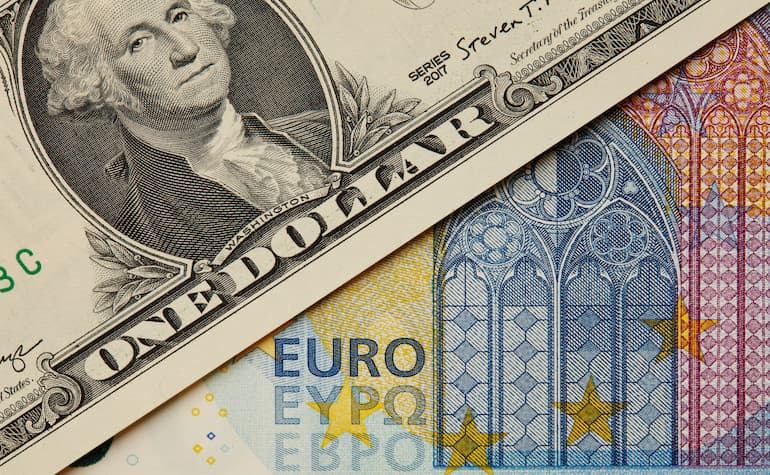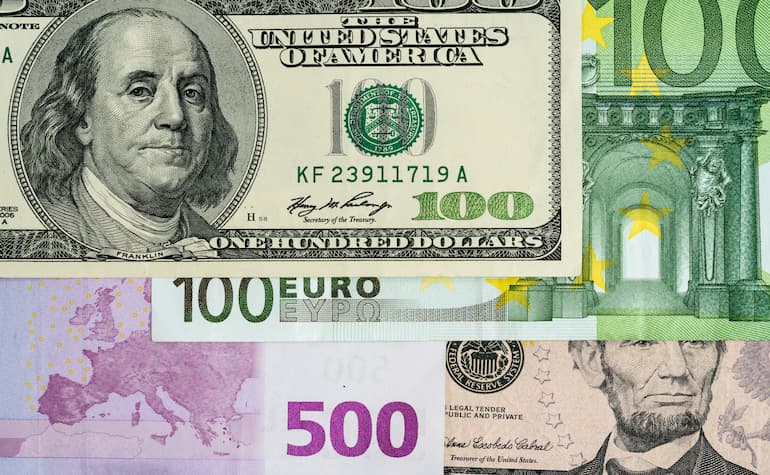市场资讯及洞察
%20(1).jpg)
本来今天想聊聊澳洲央行副行长最近公开谈到的有关澳洲有可能陷入经济低速增长的怪圈的问题,但是想想过去几篇文章都是说澳洲的,自己都觉得有点过于多了。但是很多内容不是我不想说,说国内经济情况,就怕你懂的,说欧美呢,估计大家也没啥兴趣看,说数字货币,也容易被黄标,导致我都不知道说什么好。那想来想去,最近看似比较大的事件就是美国国会关于预算用完,政府停摆的讨论的。
我们都知道,几乎每年来那么一次的停摆,今年又来了。这次停摆的时间再次打破历史记录,到上周末为止,已经超过38天了。没钱发工资、预算批不下来、议会还在吵。看着熟悉吧?因为这已经不是第一次了。过去10年,美国政府停摆过4次,每次都是在最后一刻“凑合”过关。从奥巴马到拜登,再到现在的老川,都一样。
有人说这就是美国政治的一部分,可在投资眼里,这更像是一种系统性疲态——就是那个世界最强信用体的裂缝,越来越多了。而且每次的解决方案都是很不要脸的继续提高债务上限,换句话说就是多印一点美元。
BUT, 就算再无赖,也得按照自己定的规矩来:
美国财政部的数字摆在那儿:
截至2025年10月底,美国的联邦总债务已经突破34.9万亿美元,还在以每秒钟大约4万美元的速度增加。光是2024财年,财政赤字就超过1.7万亿美元。而且更离谱的是,光“还利息”这一项,2025年预计就要花掉1.1万亿美元。什么意思?
就是美国政府借的钱,不是用来搞建设、科研或就业,而是越来越多地在还旧账的利息。这像不像信用卡欠多了,每月只够还最低额?加入一艘航母需要1000亿美元造价(不包括后期维护保养),那每年美国国债需要支付的利息就等于10艘航母的造价。
再看点细的。现在美国政府每收进1块钱税,大概要花掉1块三。财政支出和收入差了三成,完全靠举债撑着。以前大家信美国债是“无风险收益”,现在越来越多的投资机构开始犹豫了。这么每年收100花130,总不是个办法啊,这要是某一天出现点啥问题,是不是之前发美债的都有可能不算了?
那我们老百姓这么想,自然其他国家也会担忧。所以到2024年底,日本和中国这两大美国国债持有人,都在减持美债。日本在过去一年里减少了大概500亿美元持仓,中国更是创下了十年新低,只剩不到7700亿美元。
什么意思?全球主要买家在撤退。买这个美元纸币,太没有安全感了。买了也不是自己的,说查封就查封,说不能用就不能用。这算什么?当甲方还要这么受气。
讲真,这种对美元信用体系开始怀疑的局面在历史上是第一次。美国长期靠发债维持政府运转、靠美元霸权转嫁通胀。可现在,财政失衡、政治对抗、地缘风险……都在削弱那个“美元信仰”。
你想啊,美元强的底层逻辑是什么?是航母和F22,哦不对,说错,重来啊,美元的底层逻辑是什么?是信任。
大家相信美国政府永远能还钱、永远有能力印钱、永远不会倒。可现在连他们自己内部都吵得不可开交,国会关门、债务上限拉扯、甚至连总统都公开说“预算快撑不住”。美元的信任体系开始打折。
这时候你就得想:如果世界对美元信心动摇,那资金往哪跑?
答案其实很简单——黄金。(其实数字货币也起到了部分作用,但是因为过于分散,种类太多,导致资金无法集中)
别看黄金没利息、也不分红,但它有个谁都替代不了的特性:它不是谁欠谁的债。
你拿着美债,信的是美国政府的信用;你拿着黄金,信的是全人类几千年的共识。几千年前的埃及法老都爱这个,肯定没错。
最近几个月黄金的表现也印证了这点。
2024年年底,国际金价突破每盎司2400美元的新高,到了2025年10月,又一次冲上2500美元附近。你说这只是地缘政治?那只是表面。深层原因,是全球在寻找美元之外的安全锚。
咱看印度、土耳其、俄罗斯这些国家央行,去年都在疯狂买金。根据世界黄金协会的数据,2024年各国央行净增持黄金超1000吨,创下历史第二高。
这说明:连各国政府都不太敢再押宝美元。我的看法很简单:
黄金这波不是短线冲动,而是长期趋势在切换。
美元几十年的霸权红利,靠的是全球信任。可当信任开始松动,这个故事的主角可能要换了。除非美国再次把老二老三整服气了,之后各位小弟就会再次对大哥的地位不会质疑了。作为群众,咱们其实不希望看到这一天到来,不论结局谁赢,期间的不可控因素太多,一旦一个不小心,咱们就要见证咱们现代人类最后的辉煌了。
最后,我不建议大家一股脑地“梭哈黄金”,但起码你得让自己有点配置。就像以前老人说的——“仓里没点金,心里没底气。”
那具体咋搞?
你可以分几种方式:
1. 实物金:最笨但最踏实。买金币、金条,放保险箱。但是每次买卖差价几乎等于价格的10%,交易成本极高。
2. 纸黄金/ETF:操作灵活,适合不想拿实物的人。缺点是,手里没有那个沉甸甸的金子,总感觉只是个数字而已。
3. 黄金矿业股:风险高、弹性大,适合激进投资者。这个就看人品了,如果运气好,5倍10倍不是梦,当然,更大的机率是,没挖到,宝马变单车。
从长远来看,我个人倾向于使用自己资金10-30%购买ETF作为“稳健基础”。这不是投机,而是保险。你不指望它天天涨,但万一美元系统出事,它能救你一命。
再说一句现实点的。
现在美国债务增长速度远高于GDP增长。也就是说,他们靠印钱维持系统平衡。通胀虽然被压了一点,但核心通胀还在3%左右,远高于美联储2%的目标。
这意味着:美联储降息空间有限,财政却还要继续借钱。
那结果?
货币越来越多,信用越来越稀。
黄金,就是对冲这种“信用通胀”的最好工具。
有人问:“那美元真的会崩吗?”
麦哥的回答是:不会马上崩,但它会慢慢失去神圣光环。这不,11艘航母还是很厉害的。
历史上没有哪个超级货币能永远称王。英镑用了100多年从巅峰掉下来,美元可能也会经历同样过程。如果大家学过历史应该可以知道,黄金在1971年美元脱钩后,从每盎司35美元涨到现在的2500美元。它没变,是货币的实际价值在变。
所以,简单总结:
美国政府停摆也许能暂时拖过去,债务上限也许能再抬一点,但信任这种东西,一旦开始透支,就很难补回来。你不能指望一个连工资都快发不出的政府,永远当世界的“信用中心”。美元可能还会强一阵子,但我认为黄金这波超级大牛市,才刚刚开始。
各位读者,我不是劝你买金发财,而是提醒你:这个世界的信用体系,正在慢慢换轨。
写完以后,赶紧用上网乘着黑五买一堆没用的垃圾。虽然咱们知道黄金美丽,价格长虹,但是咱日常生活,还是纸币方便啊。
生活还得过,但是咱们脑子不能糊涂。对吧?
免责声明:GO Markets 分析师或外部发言人提供的信息基于其独立分析或个人经验。所表达的观点或交易风格仅代表其个人;并不代表 GO Markets 的观点或立场。
联系方式:
墨尔本 03 8658 0603
悉尼 02 9188 0418
中国地区(中文) 400 120 8537中国地区(英文) +248 4 671 903
作者:
Mike Huang | GO Markets 销售总监


USD rallied modestly into month end with DXY pushing to the top of its recent range to again test the big 102 resistance level. The data highlight out of the US was the Chicago PMI figure which rose from the prior 41.5 to 42.8, but missing expectations of 43.3. in FedSpeak, Governor Goolsbee added little new from the FOMC statement last week stating he is “not sure when the Fed will be done raising rates and they are making good progress but will let the data guide them” and they may or may not hike in September. EUR was weighed on by the Dollar strength with EURUSD dipping below the psychological 1.10 level early in the session before finding support at the lower trend line.
A bounce on hot inflation data and a strong GDP out of the Eurozone saw EURUSD reclaim the 1.10 level, albeit unconvincingly. Currently, markets are pricing in around a 25-30% probability of a 25bp hike in September, with the ECB being “data dependant” any and all news regarding inflation out of the EU should see an impact on EUR. JPY was markedly weaker to start the week following on from the BoJ meeting on Friday.
During the Asian session yesterday, the BoJ offered to buy an unlimited amount of JGBs at a fixed rate in an unscheduled announcement in an effort to defend their new “flexible” yield control limits, a feeling of panic at the Japanese Central Bank saw selling in JPY, with USDJPY heading above 142, looking likely to test the BoJ resolve at the “intervention” zone of 145 in the near future. AUD and NZD predominantly outperformed, with AUD bring the clear winner on more talk from China regarding future stimulus, with AUDUSD rising through and holding the big figure at 0.6700. AUD traders also positioning for the RBA policy decision due today at 14:30 AEST, markets are currently split between a hike or hold following the lower than expected Aussie CPI data last week, with futures showing a 15.5% of a hike, but economists polled have it as much closer odds so could be an exciting meeting.
Todays Calendar below:


FX WRAP USD was choppy with the US Dollar Index ending the session flat in range bound trade. Unemployment claims dropped to 239k from 250k the prior week which was in line with consensus and having little effect on the USD, though Philly Fed Manufacturing figures did have a big beat coming in at +12.0 vs an expected -9.8, which was the highest print since April 2022. This, along with stubbornly high yields and a general risk-off background, saw the USD reverse some early weakness on Yuan intervention headlines.
DXY pushing its head above the resistance at July’s highs before stalling. JPY was the G10 outperformer against the USD. USDJPY now having eight straight days printing higher highs and higher lows, its longest streak since October's BoJ intervention-driven collapse from 32-year highs.
USDJPY hit a high in APAC trading of 146.56 on weak Japanese data, before fading to hit a low of 145.62. Not a peep out of the Japanese MoF yet but desks put the recovery down to yield differentials as US Treasury yields plateaued, while a poorly received Japanese JBG bond auction saw Japanese yields spike on the 30 years. Another currency on the intervention watchlist is the Chinese Yuan.
Bloomberg reports of Chinese authorities reportedly telling state banks to escalate Yuan intervention saw USDCNH have its largest drop of the month, breaking a 5-day rally. There is also theories floating around that China is funding Yuan intervention through selling US Treasuries, which would explain US treasury weakness (keeping yields elevated), which is unusual in an equity market risk off environment. AUD and NZD were the G10 underperformers again, AUD underperforming the NZD after a big miss in the Aussie employment report, where unemployment unexpectedly rose to 3.7% and jobs fell by 14.6k vs a 15k rise expected.
AUDUSD printed a low of 0.6366, but moved higher on the back of Yuan strength as the session went on. AUDNZD recovered the losses after the Aussie jobs report to move back above the key 1.080 level. Gold again moved lower, with XAUUSD breaking key support at 1892, after a test of the 1902 resistance early in the session was forcefully rejected.
The economic calendar is very light today, with only UK retail Sales being of any significance.


The long-awaited July FOMC meeting is finally upon us where rates markets are pricing in a sure thing for a 25bp hike (even a small chance of a 50bp), the question that traders will be looking for to be answered is “is this it?”. With a growing number of economists calling this the top in rates, butting up against the FOMC June statement and unwavering Fed speak since, giving guidance that there will be two more this year (including July if it happens). This sets traders up with an intriguing FOMC meeting, with the accompanying statement and Powell Presser sure to see some volatility as traders look for clues as to what’s to come.
With the background of recently cooling inflation, any language around the previously released June dot plots and whether they are still a reasonable estimate of future rate movements will likely be key. Fed Futures odds: Source: CME Fedwatch tool Tis seta traders up with some unique opportunities as the battle between the Market and the Fed should see some real volatility in both direction as market participants digest the statement and then Powell’s presser, which in the past, has contradicted somewhat traders perception of the statement. Charts to watch: DXY – The US Dollar Index It’s been straight up since mid-July after DXY bounced from extreme oversold levels, breaking through and holding the key S/R (and psychological) 101 level, which has held as support in the last couple of sessions.
Despite this recent rally DXY is still in the oversold half of it’s daily RSI, a hawkish Fed pushing back against the market today would likely see DXY push to test the next major S/R level at 102. A dovish Fed could see the recently established support at 101 seriously tested. In my opinion there is more chance of an upside surprise, given the market seems to be leaning towards pricing in a Powell capitulation.
US 10-year government bonds Government bonds are an asset. I think a lot of CFD traders are missing great opportunities in, in the current climate of rates and inflation taking center stage they are one of my favourite markets to trade with some great range trading opportunities. Looking at the chart of the US 10-year with the yields superimposed to see the negative correlation between the two (when you trade bonds, you trade the price, not yield) Over the last twelve months the yield on the 10-year has tested and subsequently struggled to stay above 4%, this turn lower in yields at this level gives a bond trader an opportunity by buying the bond price.
Todays FOMC should see some volatility in yields, I recommend keeping an eye on these over the coming days for some good trading opportunities as yields hit pivotal levels. Today’s FOMC decision is due out at 18:30 GMT


After surging close to 4% since early July off the back of a weakening USD, the EURUSD pair has stabilised around $1.123. With very little volatility seen this week in the pair, eyes now turn to the euro, as the European inflation data is set to be released today. Analysts are predicting a continued downward trend in inflation, with a Year-on-Year forecast of 5.50%, which is below May’s figure of 6.1%.
If the inflation data comes in above forecasts, we may see a further increase in the EUR as investors move towards the potentially higher yields. On the technical front, the tightening of Bollinger Bands on the 4-hour chart is something to watch. The lack of movement in the EURUSD pair throughout this week has led to exceptionally tight Bollinger Bands, with levels not observed on this timeframe since 2021.
When Bollinger Bands contract significantly, it typically signifies a period of low volatility and suggests that a breakout or significant price movement may be on the horizon. The Relative Strength Index (RSI) is also in overbought territory on multiple timeframes, including the daily. This might suggest there is room for a cool-off before a further continuation higher.
However, with the European inflation data due today, the fundamental data might cancel out any technical signals.


After reaching the high of 1.1250, last tested in 2022, the EURUSD has been trading steadily lower and currently sits along the 1.0850 support level, formed by the 61.8% Fibonacci retracement level and the previous swing low from early July. Looking at the technical aspects, the Ichimoku cloud indicates continued bearish pressures, with the top of the channel providing dynamic resistance, highlighting further downside potential for the EURUSD. The current downtrend on the EURUSD has been driven by the European Central Bank’s (ECB) comments in July that there was no clear bias in favour of hiking or holding rates for the upcoming meeting in September.
Coupled with the increasing likelihood of another rate hike to come from the US FOMC in September, as the Fed continues to fight inflation, strength in the DXY has led to the EURUSD trading lower. While a brief retracement could be likely to retest the upper bound of the channel, look for the EURUSD to maintain within the bearish channel. If the price breaks below the support level of 1.0850, this could signal a confirmation of further downside, with the next key support level at the previous swing low, along the 1.0650 price level.


The EURUSD pair has been navigating challenging waters in recent weeks, experiencing a decline of more than 5% since mid-July. This decline has primarily been due to the USD's strength, as the Federal Reserve remains firm in its commitment to maintaining higher interest rates for longer to bring down inflation. Last week marked a critical turning point for EURUSD as it breached a crucial trend level.
The ascending channel that had been in place since early 2023 was broken, resulting in a swift price decline to around 1.07. Presently, the pair is sitting precariously on an important horizontal support level. The significance of this support level cannot be overstated.
Failure to hold at this level could lead to further downward movement, with the next support zone around the 1.05 mark. This impending test of support comes at a pivotal moment as the market eagerly await the release of the US Consumer Price Index (CPI) data later this week. The upcoming CPI data will be the main event for USD traders this week.
A decline in inflation could potentially soften the USD, suggesting that the Fed might consider an earlier-than-expected rate cut. On the other hand, if inflation exceeds analyst estimates, it may bolster the USD's strength, potentially causing the EURUSD pair to breach its current support level and head towards lower levels. As we approach the release of the CPI data, all eyes are on this key economic indicator.
Its outcome will undoubtedly serve as a pivotal driver of direction for the EURUSD pair this week.

